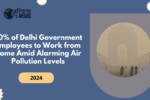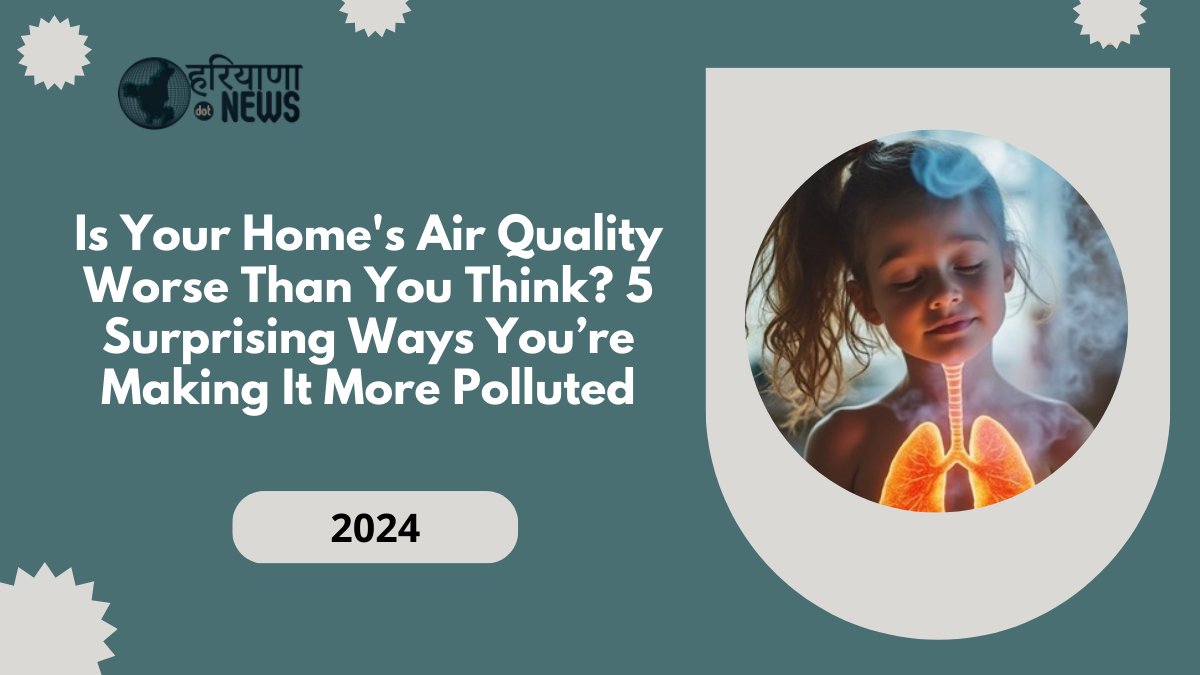The air inside your home might be more contaminated than you realize, and your daily habits could contribute to the problem. Here’s how you might be unintentionally worsening your indoor air quality and what you can do to fix it.
Your Home’s Air Quality Worse Than You Think
Many of our everyday habits at home increase our exposure to indoor pollution, which is often as dangerous as the outdoor Air Quality Index (AQI). While external factors like dust, construction work, industrial emissions, crop burning, vehicle exhaust, and energy production are well-known contributors to outdoor air pollution, our home activities can also significantly impact indoor air quality.
These daily routines can elevate the AQI indoors, making it as harmful to our health as the air outside. Poor indoor air quality can lead to serious health concerns such as cardiovascular problems and respiratory illnesses and is responsible for more than 2 million deaths annually worldwide. Dr Sachin Kumar, Senior Consultant in Pulmonology and Critical Care Medicine in Bengaluru, shared five critical actions we need to stop doing immediately to improve indoor air quality:
1. Overlooking Sources of Indoor Pollution
It’s a common misconception that staying indoors shields you from air pollution. In reality, many household activities can release harmful pollutants into your home’s air. Cooking with certain oils, lighting incense or scented candles, and using cleaning products with chemicals contribute to releasing volatile organic compounds (VOCs), formaldehyde, and particulate matter (PM 2.5 and PM 10). Over time, these pollutants accumulate, making indoor air just as hazardous as outside air.
Solution: Switch to natural or eco-friendly cleaning products and ensure proper cooking ventilation. This can reduce the buildup of dangerous chemicals in your home’s air.
2. Inadequate Home Ventilation
During colder months, many people shut their windows and doors, trapping pollutants indoors. Harmful gases like carbon dioxide and VOCs can build up without proper airflow, leading to poor indoor air quality. Sunlight and fresh air are crucial in reducing indoor pollutants, as natural light can help lower greenhouse gases and purify the air.
Solution: Improve your home’s ventilation by regularly opening windows, using exhaust fans, and installing air purifiers with HEPA filters. Allowing sunlight to enter your living spaces can also help reduce pollution levels.
3. Smoking Indoors
Smoking inside the house significantly worsens indoor air quality. Cigarette smoke contains numerous harmful substances, including carbon monoxide, benzene, and tar, which linger in the air long after smoking. These pollutants not only affect smokers but also harm those living with them, leading to increased exposure to secondhand smoke.
Solution: The best way to protect indoor air is to stop smoking indoors. If smoking is unavoidable, step outside to smoke and ensure the home is well-ventilated afterwards.
 Discovering the Ultimate Benefits of Amla Oil for the Best Haircare Experience
Discovering the Ultimate Benefits of Amla Oil for the Best Haircare Experience
 Breast Cancer: Key Early Symptoms Women in Their 20s, 30s, and 40s Should Not Overlook
Breast Cancer: Key Early Symptoms Women in Their 20s, 30s, and 40s Should Not Overlook
 A 30-Minute Bodyweight Workout That Requires No Equipment: Are You Up for the Challenge?
A 30-Minute Bodyweight Workout That Requires No Equipment: Are You Up for the Challenge?
 50% of Delhi Government Employees to Work from Home Amid Alarming Air Pollution Levels, Announces Gopal Rai
50% of Delhi Government Employees to Work from Home Amid Alarming Air Pollution Levels, Announces Gopal Rai
 Vitamin D Supplements May Help Lower Blood Pressure in Older Adults with Obesity
Vitamin D Supplements May Help Lower Blood Pressure in Older Adults with Obesity





4. Neglecting HVAC System Maintenance
Heating, ventilation, and air conditioning (HVAC) systems are crucial in maintaining air quality, yet they often get ignored until something goes wrong. These systems can accumulate dust, mould, and other allergens circulating throughout the house. Over time, this can severely degrade indoor air quality and worsen respiratory conditions.
Solution: Regularly clean and maintain HVAC systems by replacing air filters every few months and scheduling annual inspections. This ensures that pollutants are not recirculated through your home.
5. Not Wearing Masks Outdoors in Polluted Areas
While many people have stopped wearing masks after the pandemic, using them in areas with high AQI levels is still a brilliant idea. Outdoor air pollution can be just as harmful, and brief exposure to dust and particulate matter can have long-term health consequences.
Solution: In regions with poor air quality, wearing a mask can serve as a critical defence against breathing in dangerous pollutants. Even short trips outside in polluted environments can expose you to harmful particles, so it’s wise to wear a mask as a preventive measure.
Final Thoughts
Improving your home’s air quality involves more than avoiding outdoor pollution. By recognizing the indoor factors contributing to poor AQI, you can take proactive steps to protect yourself and your family from the harmful effects of air pollution. Simple actions like enhancing ventilation, maintaining your HVAC system, and reducing the use of toxic household products can significantly improve your home’s air quality and help you breathe easier.
Click here to know more.






